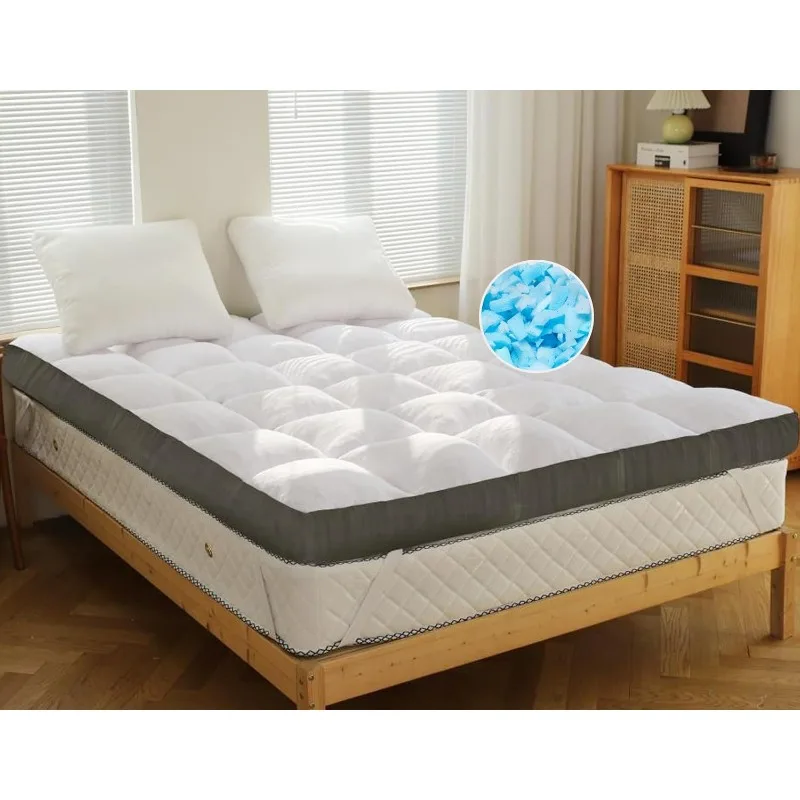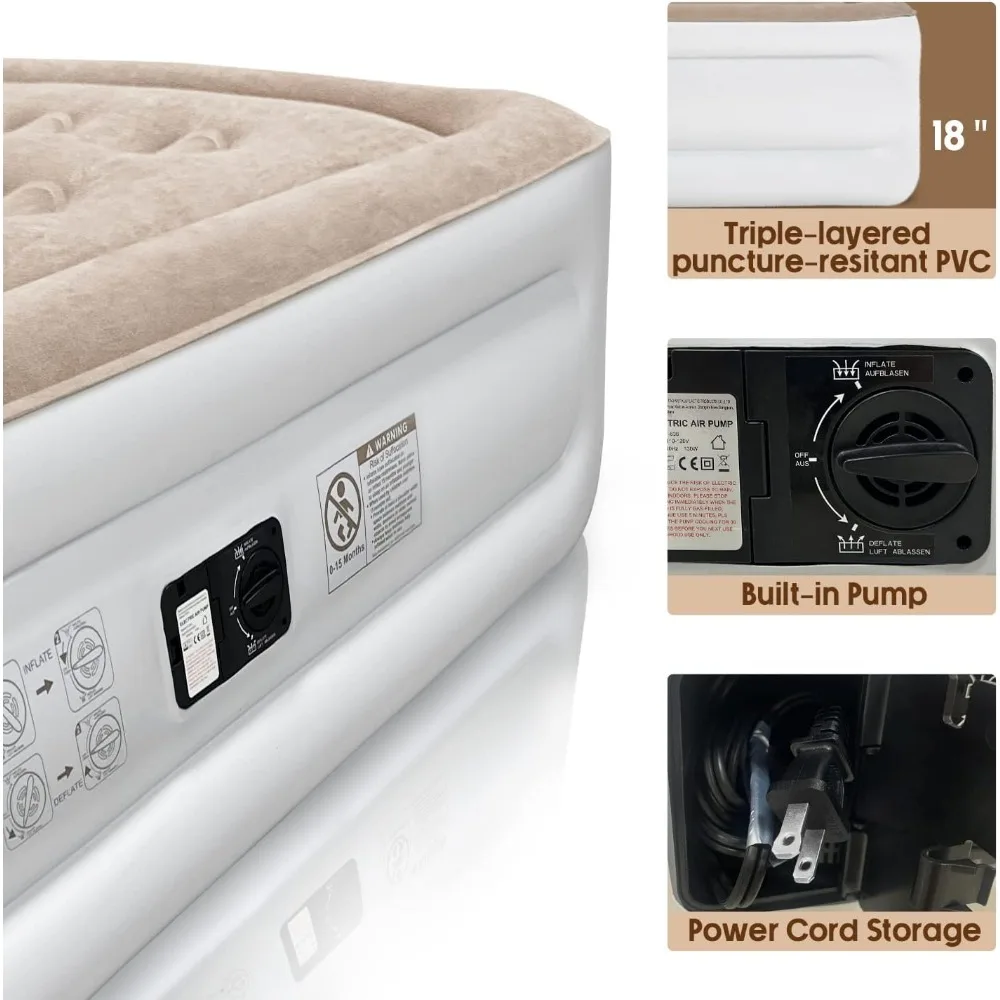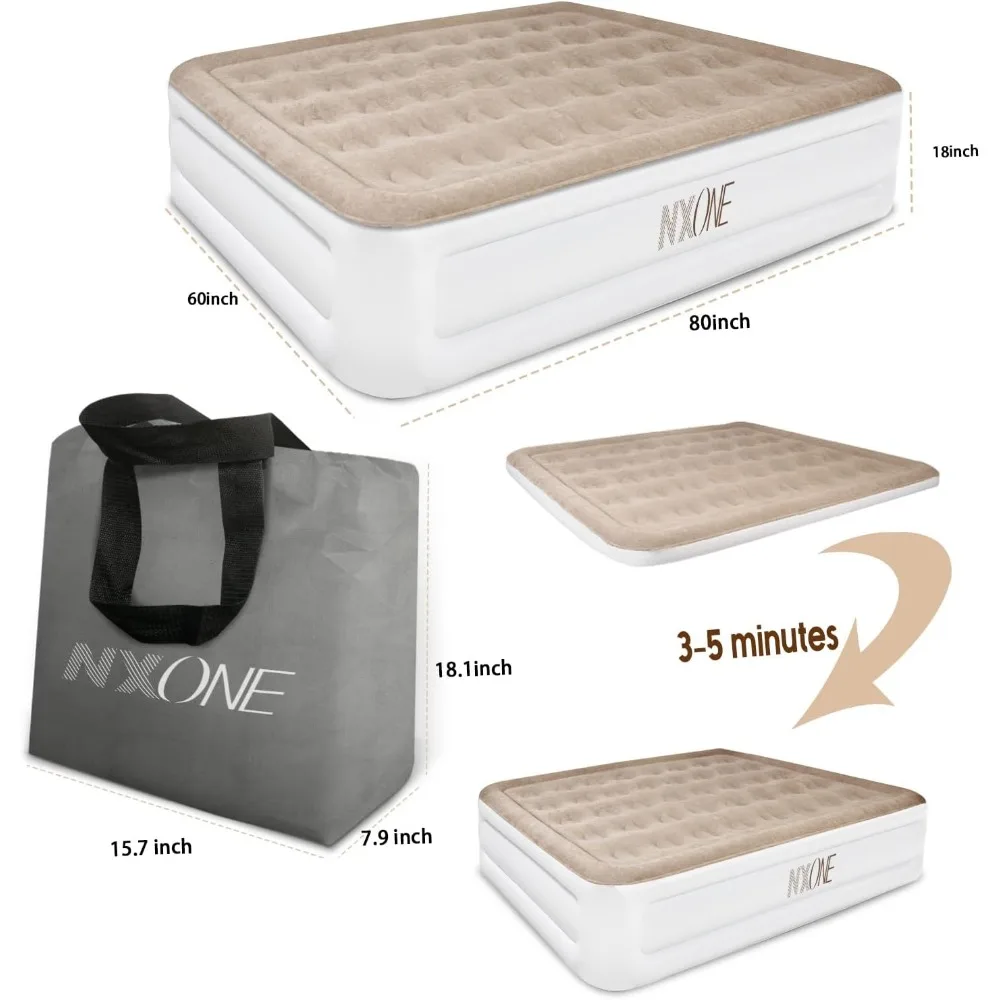Introduction: The Frustration of a Deflating Air Mattress
There’s nothing quite as frustrating as waking up in the middle of the night or first thing in the morning to find your air mattress has deflated, leaving you uncomfortably close to the hard floor. Whether you’re using it for camping, as a temporary bed for guests, or as a primary sleeping arrangement, an air mattress that doesn’t hold its air can quickly turn a good night’s sleep into a disappointing experience. Understanding the science behind why air mattresses lose air and how to effectively prevent it can save you time, money, and discomfort. This article provides a comprehensive overview of the factors contributing to air loss in mattresses and offers practical solutions to extend their life and usability.

The Composition and Structure of Air Mattresses
Air mattresses are typically made from a combination of vinyl, PVC, or similar synthetic materials that are designed to be durable and airtight. These materials allow the mattress to hold air and provide a cushion surface for sleeping. Internally, the mattress often includes a series of baffles or chambers that help distribute air evenly and provide additional support. The seams and valves are critical components where two edges of the material bond together or through which the mattress is inflated and deflated. While these components work together to create a comfortable sleeping surface, they are also potential points of failure where air loss can occur.
The Role of Temperature Changes
One of the most common reasons air mattresses lose air is due to temperature fluctuations. Air, like many substances, expands when heated and contracts when cooled. If you inflate your air mattress during the warm part of the day and then use it in a cooler environment, the air inside the mattress will condense, causing the mattress to deflate. This phenomenon is governed by the ideal gas law in physics, which indicates that the volume of a gas is directly proportional to its temperature when pressure is constant. As nighttime temperatures drop, the air inside contracts, leading to a noticeable loss of firmness. To address this, try inflating your mattress in the cooler part of the day or give it a top-off before you sleep to counteract the temperature variation.
The Impact of Over-Inflation
Over-inflation is another key factor that can lead to air mattresses losing air. When an air mattress is over-inflated, the internal pressure increases significantly, placing excessive stress on the seams and materials. This increased pressure can lead to weak points in the seams and even cause small, hard-to-detect holes to form. An over-inflated mattress is also more susceptible to punctures from sharp objects or rough surfaces. To prevent this, always follow the manufacturer’s recommended inflation guidelines, ensuring you do not exceed the specified air pressure. A good rule of thumb is to allow for some flexibility and softness in the mattress to accommodate natural movement and use.
The Role of Poor Seams and Valves
The seam and valves are the most vulnerable parts of an air mattress. Seams are where two pieces of material meet and are bonded together, and if this bond is not perfectly airtight, small leaks can develop. Similarly, the inflation valve, which can be a simple plug or a more complex air pump mechanism, is a common culprit for air loss. Valves can degrade over time due to wear and tear, or they might not seal properly after inflation. Regularly checking the seams and valves for leaks and ensuring they are securely closed can mitigate these issues. Some air mattresses come with built-in air pumps that have auto-shutoff features to prevent over-inflation and help maintain air pressure, but manual models require more attention to these details.

The Effect of Weight and Pressure
The amount of weight and pressure applied to an air mattress can also affect its ability to hold air. Every time you sit, lie down, or move on the mattress, pressure exert on the seams, valves, and material. Heavy or uneven weight distribution can cause stress points that may lead to air leakage. Moreover, repeatedly applying pressure in the same areas can weaken the material over time. To mitigate these effects, try to distribute weight evenly by rotating the mattress periodically and avoiding placing heavy objects on it for extended periods. If multiple people use the mattress, try to ensure that they spread out as much as possible to distribute the load evenly.
The Importance of Proper Maintenance and Care
Taking good care of your air mattress can significantly extend its lifespan and reduce air loss. Regular maintenance involves cleaning the mattress according to the manufacturer’s instructions, checking for leaks, and storing it correctly when not in use. Ensure the mattress is fully deflated and folded neatly to prevent creases and stress on the seams. When using the mattress, place it on a soft surface away from sharp objects and harsh conditions that could puncture it. Using a mattress pad or cover can also add an extra layer of protection against wear and tear, helping to keep the surface material intact and the seams secure.
Common Causes of Punctures and Holes
Punctures and holes are perhaps the most obvious reasons why air mattresses lose air. These can cause by rough surfaces, sharp objects, or even small, unnoticed items like gravel or nails. Pets with sharp claws can also inadvertently damage an air mattress. Outdoor use increases the risk of encountering such hazards, but even indoor use can lead to punctures if the mattress place on an uneven or cluttered surface. To prevent punctures, always use a protective layer underneath the mattress when placing it on rough ground, and keep the sleeping area clean and free from potentially damaging objects. Regularly inspect the mattress for signs of damage, particularly if pets have access to it.
Effective Leak Detection Methods
Identifying the source of a leak is crucial for repairing an air mattress. One common method is the soapy water test, where you mix soap and water, brush it over the entire surface of the mattress, and look for bubbles that indicate escaping air. Another method is to listen for a hissing sound or feel for escaping air with your hand. If these methods are not feasible, submerging the deflated mattress in a tub of water can also help locate small leaks, although this is not always practical, especially for larger mattresses. Once a leak identify, marking the spot with a piece of tape or the provided repair marker ensures you don’t lose track of it during the repair process.
Repairing Small Holes and Leaks
Once you’ve located the leak, the next step is to repair it. Most air mattresses come with a repair kit that includes patches and adhesive. Ensure the area around the hole is clean and dry before applying the patch. Cut the patch to size if necessary, apply the adhesive around the hole, and firmly press the patch over it. Allow the adhesive to dry completely according to the instructions before inflating the mattress again. For larger leaks or recurring issues, a more robust patch or even professional repair services might be necessary. Making thorough and timely repairs can prevent a small problem from turning into an irreparable issue.

Advanced Prevention Techniques: Smart Mattresses and Accessories
As technology advances, so too do the solutions for preventing air loss in mattresses. Smart mattresses with integrated sensors can monitor air levels and automatically adjust the pressure to maintain firmness. These high-tech solutions can be more expensive, but they offer convenience and peace of mind. Additionally, investing in high-quality air mattresses and accessories designed to enhance durability, such as reinforced seams and heavy-duty valves, can be worthwhile. Some premium models also come with warranty coverage that can protect your investment and provide assistance in case of defects or damage.
Conclusion: Ensuring Longevity and Comfort
Understanding the science behind why air mattresses lose air—and implementing strategies to prevent it—can greatly enhance your sleeping experience and extend the lifespan of your mattress. From the physical properties of air and material stress to meticulous maintenance and advanced technologies, a comprehensive approach is essential. By being proactive in care, mindful of environmental factors, and diligent in repair, you can enjoy the benefits of a reliable and comfortable air mattress for many nights to come. With the right knowledge and tools, a deflating air mattress can be a thing of the past, ensuring that you—and your guests—get a good night’s sleep every time.










